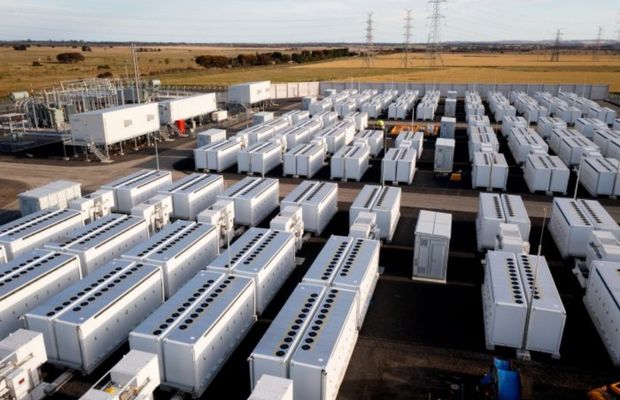Battery energy storage play a pivotal role in stabilizing renewable energy sources, effectively overcoming the inherent challenges posed by the intermittency and variability of wind, solar, and other renewable energies. Here’s a closer look at how battery energy storage can address these challenges and stabilize renewable energy for a more reliable and sustainable energy grid.

1. Mitigating Intermittency and Variability
Renewable energy sources like solar and wind are dependent on weather conditions, making them variable and intermittent. battery energy storage can store excess energy generated during periods of high wind speeds or strong sunlight and then release it during periods of low wind or solar generation. This ability to store and dispatch electricity on demand smoothens out the supply, ensuring a constant and reliable energy flow despite the variability of renewable sources.
2. Enhancing Grid Stability and Reliability
Grid stability requires a constant balance between supply and demand. The fluctuating nature of renewable energy can challenge this balance, leading to potential instability. battery energy storage can respond rapidly to changes in demand or generation, providing essential grid services such as frequency regulation and voltage control. By doing so, they enhance the overall stability and reliability of the energy grid, making renewable energy sources more compatible with the demands of modern electricity networks.
3. Facilitating Peak Shaving
During peak demand periods, the energy grid is under the most stress, and traditionally, peaker plants (usually powered by fossil fuels) are brought online to meet the demand. battery energy storage can release stored renewable energy during these peak times, reducing the need for costly and polluting peaker plants. This not only stabilizes the grid but also reduces greenhouse gas emissions and other pollutants.
4. Enabling Time Shifting
Time shifting refers to storing energy produced during off-peak hours (when demand is low) and releasing it during peak hours (when demand is high). battery energy storage allows for the effective time shifting of renewable energy, ensuring that the generation matches consumption patterns more closely. This maximizes the use of renewable energy and minimizes reliance on fossil fuels, contributing to a cleaner and more sustainable energy system.
5. Supporting Distributed Generation
Distributed generation systems, where electricity is generated close to the point of use, rely heavily on renewables. battery energy storage integrated into these systems can compensate for the unpredictability of renewable energy sources, ensuring a stable and reliable supply of electricity even in remote or off-grid areas. This not only stabilizes local grids but also enhances energy independence and security.
6. Promoting Renewable Energy Integration
By addressing the challenge of intermittency and providing grid services, battery energy storage lower the barriers to the integration of higher shares of renewable energy into the grid. Utilities and grid operators can thus rely more on renewables, pushing the energy mix towards cleaner sources and away from fossil fuels.
Conclusion
Battery energy storage is a key enabler in the global transition to renewable energy, offering solutions to some of the most significant challenges associated with wind, solar, and other renewable sources. By stabilizing and making renewable energy more predictable and reliable, battery energy storage facilitate a larger integration of clean energy into grids worldwide, pushing us closer to achieving global sustainability and climate goals. The continued advancement and deployment of battery energy storage technologies, supported by policy and investment, are crucial for harnessing the full potential of renewable energy, ensuring a sustainable and resilient energy future.
